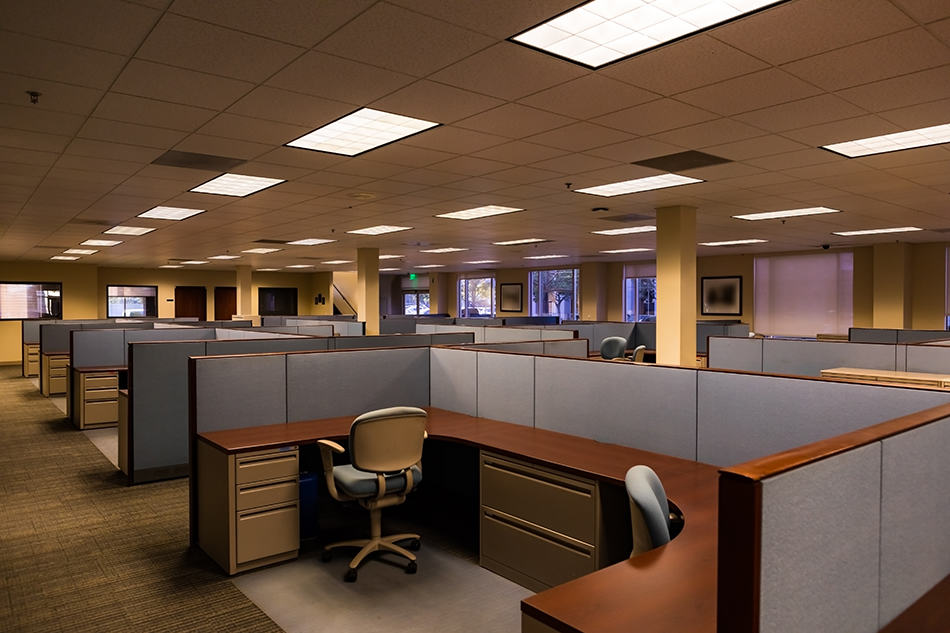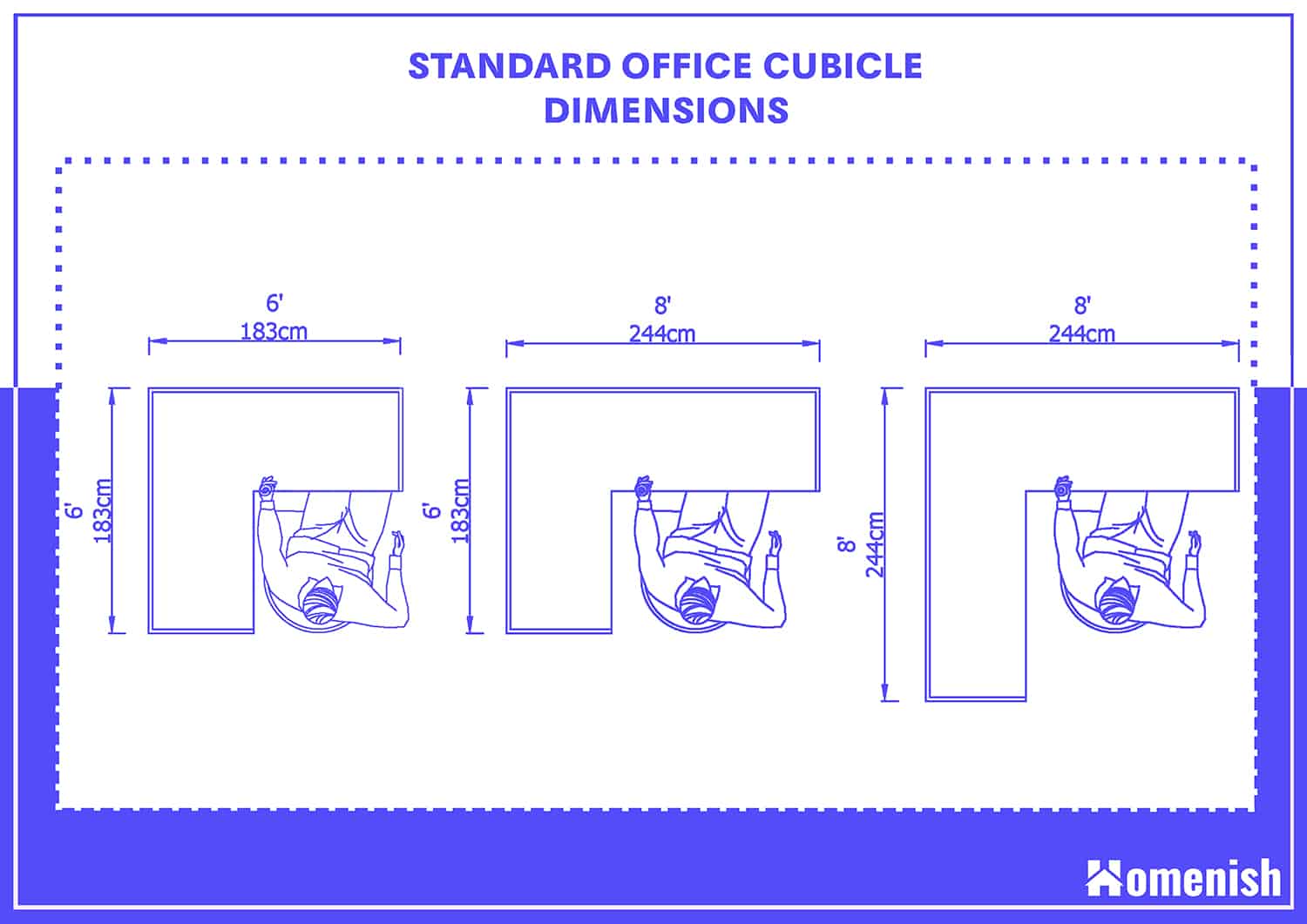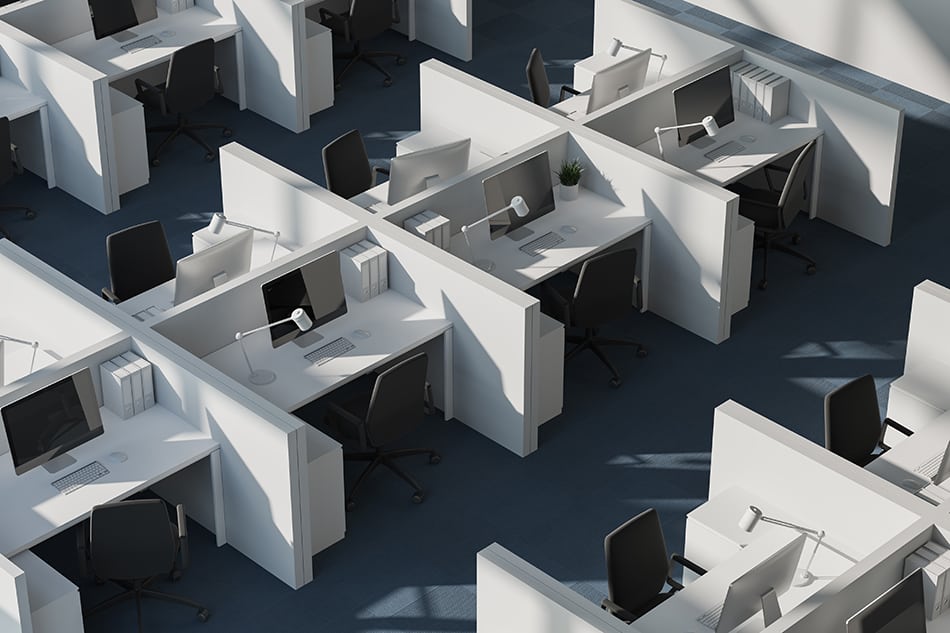Office cubicles come in three standard sizes. They can come in 8 x 8 ft, 6 x 6 ft, or 6 x8 ft with heights of between 4-6 feet. All cubicles must be for one person only but have the space for an additional chair in the event of somebody else coming in to discuss or review work.
Whilst the specifications for office cubicles have remained relatively constant over the past few years, with recent COVID restrictions, these regulatory specifications have been more heavily enforced due to the need to prevent the spread of COVID-19.
Within a lot of offices, there is a heavy focus on installing perspex screens between each cubicle to ensure that spread through saliva and other bodily fluids is kept minimal whether or not the employees are being asked to wear face masks or visors.
Standard office cubicles should have sufficient space to place a workspace such as a desk and potentially a computer as well as a seat for the employee.
Height of Office Cubicles
The standard office cubicle is a mid-range height which can vary from 4 to 6 feet high; however, this varies from office to office and whether the cubicle is a joint one. A joint cubicle means that whilst each person’s area is their own and designated for one person only. There may be a person on the other symmetrical side of the cubicle sectioned off from one another.
Disabled Access Office Cubicles
It is important to ensure that rules and regulations regarding diversity are met. Therefore, if a person with a disability requests a slightly larger cubicle, these needs must be met. Features such as a lower door handle (if the cubicle is an entirely sectioned-off one) must be considered.
Further requirements which must be considered, especially in the case of wheelchair users, are accessibility options such as wider doorways and ensuring that desks are an appropriate height so that a wheelchair user can fit underneath them comfortably.
Standard Cubicle Sizes amid COVID Restrictions
Due to the recent global pandemic and the fact it doesn’t appear to be letting off any time soon, there’s a lot of consideration as to whether 6 x 8 ft cubicles are outdated and not appropriate anymore due to the ease at which the virus can spread via being airborne.
When many businesses simply had desks, and the COVID virus was not an issue, cubicles were less commonly used; however, with the spread of this illness, many companies installed these as it enabled their business to reopen again as there were stricter measures in place.
Although office cubicles are originally meant for one person before the pandemic, now it is common practice to have a universal ban on people entering one another’s cubicles.
Health and Safety Considerations when Setting Up Office Cubicles
One aspect to consider when installing an office cubicle is the lighting within that area. If a person is directly below an office light, this can have adverse medical effects on a person’s eyesight, combined with the fact that quite often people in offices spend a large proportion of their day on a computer or looking at screens it is advisable to place cubicles where they are not directly beneath bright office lighting.
Another aspect to consider is ensuring the height of a desk is ample in comparison to the office chair provided. It is important and often common practice to provide employees with chairs that are adjustable to the individual, and therefore they can adjust their height to correspond with the desk to ensure they are at the ideal height and, therefore, the employee’s posture is correct; otherwise, they may end up with severe back and other medical problems further down the line.
It is important that within a cubicle or any office space, there is sufficient ventilation to stop both COVID-19 and other common colds and viruses from spreading among employees.
Another important health and safety aspect within a workspace is to ensure that a person can stand up, walk about and stretch their legs during the daytime. This is not as easy as it used to be because of the global pandemic; however, it is still important for the same reasons that remaining in the same space or sitting down for too long can cause a person to have blood clots and other health problems.
This also applies to those looking at computers. It’s a good idea to give your eyes a rest from a screen now and then; otherwise, eyes can become strained and, over time, permanently damaged.
Within an office, there are many health and safety aspects to be considered. No workspace cubicles must block fire exits or pathways to fire exits in case of emergencies.
Another important aspect of health and safety is to ensure that all procedures are devised with the specific workspace in mind. If there are risks of hazards, including biological, hazardous, or ergonomic, these are addressed with the correct legislation put in place to protect employees.
A final risk within an office cubicle is the placement of wires. With a lot of workspace cubicles in offices having computers or laptops, there are often a lot of wires involved in powering these and connecting them to the internet.
These must be suitably placed to ensure there is no risk of trip or fire hazards. – As well as this, it is necessary for all electronic devices to undergo sufficient testing before being installed for usage to ensure they are working amply and of no risk to the user.
To summarise, whilst office cubicles have a usual 3 sizes, these are currently heavily under review due to the current affairs in the world. The pandemic has made governing bodies review the current procedures in place and deduced that they might potentially need reviewing and adapting as perhaps they aren’t as effective as planned or first thought.
There are many health and safety hazards involved when considering a workspace based within a cubicle, from desk height to chair versatility to the placement of wires. They all need to be ergonomically considered when installed.








